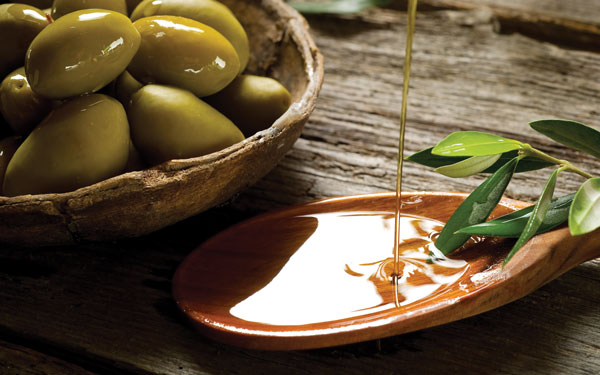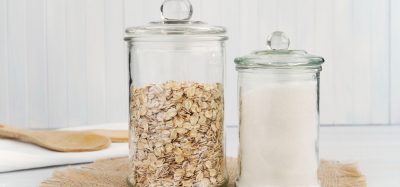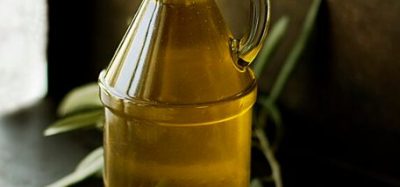An EU health claim for olive oil polyphenols
- Like
- Digg
- Del
- Tumblr
- VKontakte
- Buffer
- Love This
- Odnoklassniki
- Meneame
- Blogger
- Amazon
- Yahoo Mail
- Gmail
- AOL
- Newsvine
- HackerNews
- Evernote
- MySpace
- Mail.ru
- Viadeo
- Line
- Comments
- Yummly
- SMS
- Viber
- Telegram
- Subscribe
- Skype
- Facebook Messenger
- Kakao
- LiveJournal
- Yammer
- Edgar
- Fintel
- Mix
- Instapaper
- Copy Link
Posted: 22 February 2016 | Dimitra Tsantaki, International Commercial Litigation and Food lawyer, Tsantaki, Michalinos & Tsalmanis Law Firm / Georgios Siragakis, Technical Director of Food Allergens Labs Group | No comments yet
The European Food Safety Authority (EFSA) has evaluated nearly 3,000 ‘general function’ claims and more than 250 other applications over the past few years. In the list of health claims which has been made on foods, as referred to in Article 13 (3) of Regulation (EC) No 1924/2006, a health claim has been established for olive oil polyphenols. The claim, as registered, is that “olive oil polyphenols contribute to the protection of blood lipids from oxidative stress”…


Would the EU be creating a market within a market?
It seems that the increasing popularity of the healthy Mediterranean diet, and especially olive oil, has more than doubled demand for olive oil during the past 20 years.
Authorisation of the above health claim aroused enthusiasm and was considered by the SMEs in the producing countries as a means to convey more benefits from virgin olive oil consumption to consumers and also to gain better prices for their products since more than 11 million hectares of olives are grown in the world, spread across the five continents, two hemispheres and 47 countries where olive oil is currently produced. Olives grown for olive oil production are harvested from October to April in the northern hemisphere and from April to June in the southern hemisphere, although 98% of the world’s olives are harvested in the Mediterranean region. Spain is the largest producer of olive oil in the world (40%), followed by Italy (14%) and Greece (11% of total volume production). At present, olive oil is consumed in over 160 countries2 .
According to IOC predictions for 2015-2016, EU countries are expected to consume about 79% of EU consumption and 66% of international production. In Italy, 80% of olive oil production reaches the stage of labelling/branding, whereas in Spain and Greece only 50% and 27% respectively is sold branded, with the remainder sold in bulk form, mainly to Italy for re-export3,4.
The specification of the olive oil that produces the health claim proved to be virgin olive oil with the highest phenolic concentration. Production of extra virgin olive oil in the major producers varies since 80% of the production of Greek olive oil is extra virgin olive oil, compared with 65% in Italy and 30% in Spain5. Would the SMEs that produce and market virgin olive oil benefit from the claim?
The olive oil market: the Mediterranean region and the world
The olive is the drupe from the olive tree (Olea europaea L., Oleaceae family). The Mediterranean region is the major olive growing area and accounts for 98% of the olive tree plantations in the world. The olive fruits are consumed as olive oil or table olives. Olive oil, a traditional food product, primarily in the Mediterranean region, has been an essential part of the nutrition for civilisations, using it for thousands of years. Its production and usage has continued to evolve and is finding its way to a more competitive global market.
Olive oil production amounts to 3.1 million tonnes; this represents a 1.7% share of total output of edible vegetable and animal fats (184 million tonnes according to data for 2012)6.
What constitutes a health claim according to Regulation (EC) 1924/2006
Out of thousands of submitted applications, only a few claims have been authorised so far. In the context of Regulation (EC) No 1924/2006, a health claim is any statement about a relationship between food and health based on an opinion of the European Food Safety Authority (EFSA), which is responsible for evaluating scientific evidence provided by the interested parties. Health claims are defined as “any claim that states, suggests or implies that a relationship exists between a food category, a food or one of its constituents and health” in order to “enhance the consumers’ ability to make informed and meaningful choices”1.
The health claim for polyphenols in olive oil
Regarding olive oil, 16 petitions belonging to the category Article 13.1 (a) ‘general function’ claims of the regulation were submitted. The only authorised health claim, listed in the Regulation 432/2012, relates to the level of olive phenolic compounds and the impact on the protection of blood lipids from oxidative stress.
The conditions of use of the claim is that it “may be used only for olive oil which contains at least 5mg of hydroxytyrosol and its derivatives (e.g. oleuropein complex and tyrosol) per 20mg of olive oil. In order to bear the claim, information shall be given to the consumer that the beneficial effect is obtained with a daily intake of 20mg of olive oil”7.
Scientific evidence of the protection against oxidative stress Scientific data was provided to the Panel of EFSA with the results of the EUROLIVE study. “On the basis of the data presented, the Panel concluded that the food constituent, polyphenols in olive (olive fruit, olive mill waste waters in olive oil, Olea europaea L. extract and leaf) standardised by their content of hydroxytyrosol and its derivatives (e.g. oleuropein complex), which is the subject of the health claims, is sufficiently characterised in relation to the claimed effects”7.
The EUROLIVE study was a large, randomised, crossover, controlled study of a European population (200 healthy volunteers) that was aimed at assessing the effect of three similar olive oils with differences in their phenolic compound concentrations (2.7-366mg/kg)8.
During the selection of the olive oils used in the study, “determination of the total phenolic content of several harvests of virgin olive oil was performed, and the virgin olive oil with the higher phenolic content (366ppm) was selected”8.
“In a multicentre (six centres in Finland, Denmark, Germany, Italy and Spain), randomised, crossover, controlled human intervention study, olive oils with high (366mg/kg olive oil, i.e. 8.0mg/day; hydroxytyrosol content 63,5mg/L, tyrosol 24.4mg/L, and oleuropein derivatives 327.2mg/L as measured by HPLC) moderate (164 mg/kg olive oil, i.e. 3.6mg/day; hydroxytyrosol content appr. 28.5mg/L) and low (2.7mg/kg olive oil, i.e. 0.1mg/day; no hydroxytyrosol) phenolic content were consumed (25mL/day) by 200 male subjects for three weeks”8 . The olive oil that was used in the EUROLIVE study with high phenolic content was virgin olive oil.
According to the findings of the EUROLIVE study, “the lowest daily dose of hydroxytyrosol and its derivatives (measured by HPLC) in olive oil which showed a significant effect on in vivo LDL peroxidation was 5mg”8.
Olive oil polyphenols: chemical composition and characteristics The EFSA Panel considered that polyphenols can be characterised by their content of hydroxytyrosol and its derivatives (e.g. oleuropein complex)7.
Polyphenols comprise a very wide group (several thousands of compounds) of plant secondary metabolites including flavonoids, isoflavonoids, phenolic acids, proantho cyanidins and other tannins, and lignans with different biological activities. The major polyphenols in olive oil are phenolic acids (e.g. hydroxytyrosol and tyrosol), secoiridoids (e.g. oleuropein) and lignans (e.g. pinoresinol)9 . Polyphenols have been found to decrease heart disease risk factors by lowering blood pressure and cholesterol, reducing blood clotting and improving the health of artery linings.
The three main types of polyphenols in olive oil (flavonoids, secoiridoids and lignans) have different functions and produce different health benefits.
The flavenoid polyphenols in olive oil are natural antioxidants that contribute to a bitter taste, astringency, and resistance to oxidation. They have been shown to have a host of beneficial effects from healing sunburn to lowering cholesterol, blood pressure, and risk of coronary disease.
Health benefits have been found to occur from secoiridoid polyphenols (e.g. oleuropeinin) preventing LDL, low-density lipoprotein oxidation10. Many reports have also recognised their anti-oxidant, anti-microbial and anti-inflammatory properties. Olive oil secoiridoids could also increase aging tolerance11, which may allow an organism to survive catastrophes caused by aging-related diseases. The lignan polyphenols reduce cancer risks and specially hormone-associated cancers (breast, uterine, ovarian, and prostate)12. Oleocanthal and oleuropein aglycon have been very recently correlated with protection against Alzheimer’s disease13.
Hydroxytyrosol, tyrosol and oleuropein complex: distinction of main polyphenols and their derivatives
Polyphenols can be distinguished as simple or complex. In the first class, 3,4-dihydroxyphenyl-ethanol, or hydroxytyrosol, and p-hydroxyphenylethanol, or tyrosol, are the most abundant phenolic alcohols in olives. Oleuropein is a derivative of hydroxytyrosol. It is the ester between 2-(30,40 -dihydroxyphenyl) ethanol (hydroxytyrosol) and the oleosidic skeleton common to the glycosidic secoiridoids of the Oleaceae.
Hydroxytyrosol can be present as a simple or esterified phenol with elenoic acid, forming oleuropein and its aglycone, or as part of the molecule of verbascoside. Hydroxytyrosol (3,4-dihydroxyphenylethanol, HT) is the main phenolic compound found in olives and olive products and has great importance due to its multiple pharmacological activities. In virgin olive oils, Hydroxytyrosol represents more than 25% of the total phenolic content. Both the bioavailability and the metabolism of HT have been widely researched14,15.
Oleocanthal and other derivatives
Oleocanthal is a derivative of tyrosol and the most abundant of all phenolic compounds found in many varietals such as Koroneiki, lianolia, Throuba, ladolia, wild olive trees, tsounati, in Greece. Oleocanthal is also polyphenol said to have potential to inhibit tumor growth, to offer protection against Alzheimer’s disease and to be a COX-1 and COX-2 inhibitor. Oleacein is a derivative of oleuropein and the most powerful antioxidant constituent of olive oil13.
The challenge in evaluation
“The polyphenols (e.g. hydroxytyrosol and oleuropein complex) in olive oil, can be characterised by their content of hydroxytyrosol and its derivatives (e.g. oleuropein complex)”7.
The first step, in applying the health claim to the conditions of the market would be to identify hydroxytyrosol and its derivatives. Tyrosol and hydroxytyrosol are two independent, characteristic olive oil phenolic compounds which are present in olive oils as free or conjugated forms as secoroids or aglycones. Although the content of both total and individual phenolics varies among cultivars and harvests, free forms of tyrosol and hydroxytyrosol and their secoroids derivatives have been described as representing around 30%, and other conjugated forms such as oleuropeine and ligstroside aglycones representing almost half, of the total phenolic content of a virgin olive oil16.
It is well-known that the concentration of free hydroxytyrosol and tyrosol in olive oil is very low while their esterified derivatives are much more abundant.
Hydroxytyrosol is mainly present in the form of oleacein (3,4-DHPEA-EDA) and the monoaldehydic form of oleuropein aglycon (3,4-DHPEA-EA), while tyrosol is mainly present in the form of oleocanthal (p-HPEA-EDA) and the monoaldehydic form of ligstroside aglycon (p-HPEA-EA).
As a result, in the Regulation EU 432/2012, when stated that “The claim may be used only for olive oil which contains at least 5mg of hydroxytyrosol and its derivatives per 20ml of oilve oil”, it would be appropriate to consider tyrosol as a derivative of hydroxytyrosol, and to count oleocanthal in the measurement of phenolics because it produces tyrosol upon hydrolysis.
Methods for evaluation
Currently, the commonest methods for evaluating olive oil polyphenol content are the Folin–Ciocalteau colorimetric test and liquid chromatography17. The former method gives imprecise results because of the reagent’s low specificity towards phenolic compounds; also, such methods do not yield quantitative information about single phenolic compounds. On the contrary, HPLC is very sensitive and specific but requires time to perform the analysis (approximately 1h). It does not supply information regarding phenolic molecules. There are also commercially available kits for rapid polyphenols determination in olive oil; Oxitester and Aristoleo™ are two of them. The Aristoleo™ test kit is based on a new invention for measuring the amount of oleocanthal and oleacein in olive oil in a relatively fast manner and at a lower cost18,19.
As it is well known, after the isolation of the phenolic compounds from VOO, the next challenge is to draw up a reliable method for the analysis of the resultant extracts. Although powerful analytical equipment and methods have been developed, the total structural characterisation of the phenolic fraction is still sometimes impossible because of the complexity of the wide group of secoiridoids. The main compounds identified in this group are oleuropein aglycone, ligstroside aglycone and their derivatives such as the hydroxylated, decarboxy – methylated, dehydrated, and methylated forms. HPLC is the official method for hydroxytyrosol, tyrosol and oleuropein complex but also NMR could be used. The easiest and most accurate way to measure polyphenols complex is by using 1H NMR method20.
Conclusion
In conclusion, the selection of the appropriate analytical method used for the determination of the phenolic compounds would be determined so that it complies with scientific interpretation and application of the health claim by competent authorities of each member state of the EU. According to the requirements of Regulation (EC) No 1924/2006, “Health claims shall be prohibited unless they comply with the general requirements in Chapter II and the specific requirements in this Chapter and are authorised in accordance with the Regulation”21.
The practice of CAP and EU policies on food and agricultural production, in the recent history of EU, has resulted according to the authorities of member EU states to numerous cases of non-compliance to EC legislation against manufacturing companies. Since noncompliance to EU standards may bear significant financial repercussions to companies, it is imperative that olive oil producers and manufacturing companies alike create a strategic plan about both the appropriate method of evaluation of the olive oil phenolic compounds and the laboratory carrying out the evaluation tests. A thorough procedure and system of proof of evidence for the concentration of the phenolic compounds would be essential and vital to prove compliance at all times.
Acknowledgement
The authors thank Prof Dimitrios Kouretas for the expert opinion and providing clarifications on the subject matter.
About the Authors
Dimitra Tsantaki is a lawyer practicing food law, organic agriculture and commercial litigation. She has represented foreign corporations and groups of companies, especially in the food sector, before the International Chamber of Commerce, GAFTA, Chambre Arbitrale de Paris and the US Department of Agriculture for the National Organic Program of the US. In the last 20 years, she has collaborated in the development of an organic olive oil producing company into a leading company internationally and has provided legal assistance to olive oil mills, olive oil producers and co-operatives, manufacturing companies and certifying bodies for organic agriculture.
George Siragakis is a Food Chemist M.Sc, and Technical Director of Food Allergens Labs Group (Greece, Cyprus and Poland). He has an extensive career in olive oil quality and food laboratory analysis, and has worked in this sector for more than 30 years in several positions, such as Quality Control Manager, HACCP Coordinator, Laboratory Manager, Scientist in charge of Chemical laboratories and as Expert of Hellenic Food Safety Authority. He is also reviewer of the Journal of American Oils Chemistry Society, and member of: WG12 CEN for Food Allergen Testing and CEN/TC 275 / WG 6 / TAG 3, Board of Hellenic Chemists Association Food Sector. In 2005 he received the MedDiet award.
References
- Regulation (EC) No 432/2012, OJ L 136/25-5-2012
- International Olive Oil Production Costs Study 2015, International Olive Council, http://www.internationaloliveoil.org/items/view/186-eu-producer-prices
- https://www.nbg.gr/greek/the-group/press-office/espot/reports/Documents/Olive%20Oil_2015.pdf
- http://ec.europa.eu/agriculture/olive-oil/economic-analysis_en.pdf
- http://www.oliveoilmarket.eu/trends-in-world-olive-oil-consumption-ioc-report/
- International Olive Oil Production Costs Study 2015, International Olive Council
- EFSA J no 2011; 9 (4):2033. http://www.efsa.europa.eu/sites/default/files/scientific_ output/files/main_documents/2033.pdf
- Covas MI, Nyysonen K, Poulsen HE, Kaikkonen J, Zunft HJ, Kiesewetter H, Gaddi A, de la Torre R, Mursu J, Baumler H, et al. EUROLIVE Study Group The effects of polyphenols in olive oil on heart disease risk factors: a randomized trial, https://www2.uef.fi/documents/1099424/ 1377719/Eurolive.pdf/f99a40f9-2a91-4313-bf0a-c7a2277bef2e
- http://www.oliveoilsource.com/page/chemical-characteristics#Poly
- http://www.purextract.fr/en/active-ingredients/secoiridoid-polyphenols.html
- http://www.ncbi.nlm.nih.gov/pmc/articles/PMC3594257/
- http://articles.mercola.com/sites/articles/archive/2015/11/02/lignans-save-lives.aspx
- Magiatis et al (2014) Quantitative Measurement of Major Secoiridoid Derivatives in Olive Oil Using qNMR. Journal of Agricultural and Food Chemistry, 62, 600-607.
- Jose Rodr íguez-Morató, Laura Xicota, Montse Fitó, Magí Farré, Mara Dierssen and Rafael de la Torre, Potential Role of Olive Oil Phenolic Compounds in the Prevention of Neurodegenerative Diseases, Molecules 2015, 20, 4655-4680; doi:10.3390/molecules20034655
- Tripoli Et al (2005) The phenolic compounds of olive oil. Nutrition Research Reviews, 18, 98-112.
- http://www.nature.com/ejcn/journal/v57/n1/full/1601532a.html
- Montedoro, G., Servili, M., Baldioli, M., Miniati, E., Agrarie, I. and Costanzo, V. S. 1992. Simple and Hydrolyzable Phenolic Compounds in Virgin Olive Oil. 1. Their Extraction, Separation, and Quantitative and Semiquantitative Evaluation by HPLC . J. Agric.Food Chem. 40: 1571–1576.
- http://aristoleo.com/
- http://www.cdrfoodlab.com/food-analyzers/oxitester/
- OLIVAE No122 November 2015. 21. Regulation (EC) No 1924/2006. Article 10 § 1, OJ L 404/9, 30.12.2006







